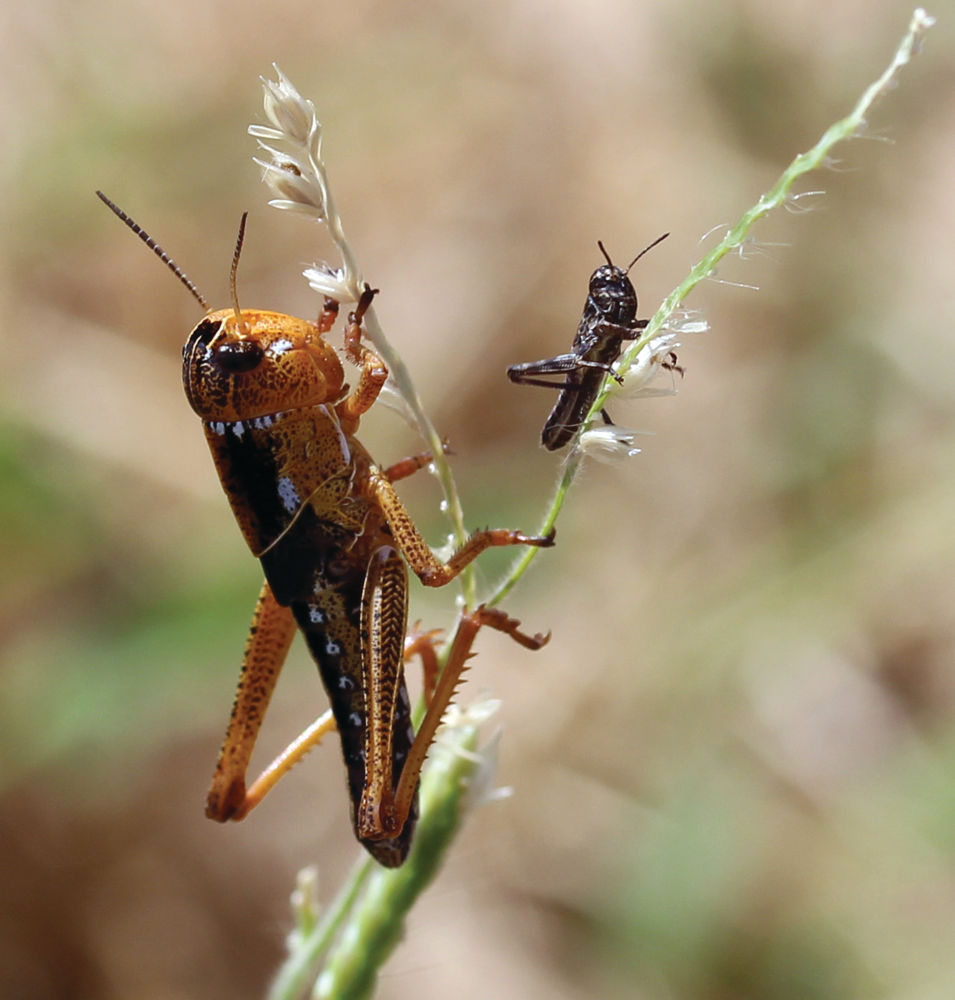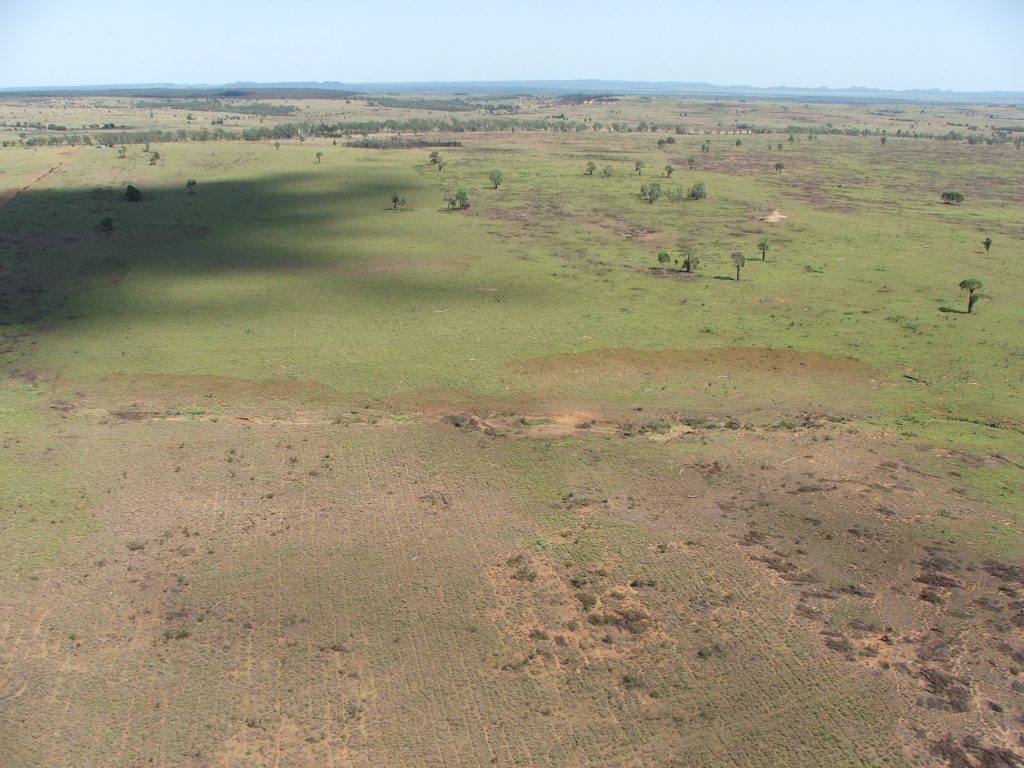It’s been more than 2 decades since we’ve had a major locust plague in Queensland, but recent seasonal conditions have created an ideal environment.
Outbreaks of migratory locusts are currently occurring across quite a few shires in Central Western regions and into Northern Queensland.
See the online map (updated daily) of current sightings and estimated densities.

Migratory locust nymphs
The Department of Primary Industries (DPI) is coordinating a comprehensive response in cooperation with local government, agricultural peak bodies, the Australian Plague Locust Commission, and others.
It is likely nymphs will continue to emerge for weeks to come. Treatment in the nymph stage is the key opportunity for intervention, with each subsequent generation having the potential to increase population numbers exponentially.

Bands of locusts visible from the air
Under the Biosecurity Act 2014, landholders have a general biosecurity obligation (GBO) to control locust populations on their properties. Vigilance and early control intervention are critical to preventing locust populations from reaching plague proportions.
DPI is responsible for coordinating management efforts if populations are beyond the capacity for landholder control and threaten key agricultural regions of Queensland. We will conduct aerial spraying in an environmentally responsible manner to control locust infestations at a nymph stage that are deemed to be a threat to agricultural production. Landholders will be contacted if their property is likely be included in this treatment.
Be on the lookout for locusts
Reporting significant locust or nymph activity is essential, as it enables DPI to monitor locust density and movement across Queensland. Reports are used to inform planning and control efforts, with information provided to local councils to assist with early detection and management strategies.
Reporting options
- Report online or offline (Survey123)
- Report online (Report a biosecurity pest or disease)
- Phone Biosecurity Queensland on 13 25 23
- Email [email protected]
Learn more about locusts and their management at the Business Queensland website.
Images © State of Queensland
